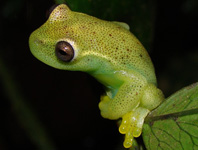Abstract
The dedicated collecting of Robert Knezour of Ipswich continues to uncover remarkable finds in the Late Triassic (Norian) Dinmore fossil insect locality of south-east Queensland. The latest discovery is a forewing of the extinct family Archipsyllidae, described herein as Dinmopsylla semota gen. et sp. nov., the first record of the family from the Triassic and from the southern hemisphere.
References
Huang, D-Y., Bechly, G., Nel, P., Engel, M.S., Prokop, J., Azar, D., Cai, C.Y., van de Kamp, T., Staniczek, A.H., Garrouste, R., Krogmann, L., Dos Santos Rolo, T., Baumbach, T., Ohlhoff, R., Shmakov, A.S., Bourgoin, T. & Nel, A. (2016) New fossil insect order Permopsocida elucidates major radiation and evolution of suction feeding in hemimetabolous insects (Hexipoda: Acercaria). Scientific Reports, 6, 23004.
https://doi.org/10.1038/srep23004Huang, D-Y., Nel, A., Azar, D. & Nel, P. (2008) Phylogenetic relationships of the Mesozoic paraneopteran family Archipsyllidae (Insecta: Psocodea). Geobios, 41, 461–464.
https://doi.org/10.1016/j.geobios.2007.11.003Lambkin, K.J. (2014a) Psychopsoid Neuroptera (Psychopsidae, Osmylopsychopidae) from the Queensland Triassic. Australian Entomologist, 41, 57–76.
Lambkin, K.J. (2014b) The Mesopsychidae (Mecoptera) of the Queensland Triassic. Australian Entomologist, 41, 135–146.
Lambkin, K.J. (2016) Revision of the Scytinopteridae (Hemiptera: Cicadomorpha: Scytinopteroidea) of the Queensland Triassic. Zootaxa, 4117 (4), 580–590.
https://doi.org/10.11646/zootaxa.4117.4.9Liang, F., Zhang, W. & Liu, X. (2016) A new genus and species of the paraneopteran family Archipsyllidae in the mid-Cretaceous of Myanmar. Zootaxa, 4105 (5), 483–490.
https://doi.org/10.11646/zootaxa.4105.5.4Prokop, J., Pecharová, M., Garrouste, R., Beattie, R., Chintauan-Marquier, I.C. & Nel, A. (2017) Redefining the extinct orders Miomoptera and Hypoperlida as stem acercarian insects. BMC Evolutionary Biology, 17, 205.
https://doi.org/10.1186/s12862-017-1039-3Purdy, D.J. & Cranfield, L.C. (2013) Ipswich Basin. In: Jell, P.A. (Ed.), Geology of Queensland. Geological Survey of Queensland, Brisbane, pp. 391–396.
Raven, R.J., Jell, P.A. & Knezour, R.A. (2015) Edwa maryae gen. et sp. nov. in the Norian Blackstone Formation of the Ipswich Basin—the first Triassic spider (Mygalomorphae) from Australia. Alcheringa, 39, 259–263.
https://doi.org/10.1080/03115518.2015.993300Riek, E.F. (1956) A re-examination of the mecopteroid and orthopteroid fossils (Insecta) from the Triassic beds at Denmark Hill, Queensland, with descriptions of further specimens. Australian Journal of Zoology, 4, 98–110.
https://doi.org/10.1071/ZO9560098Simpson, A. (1992) Ancient plants and animals. In: Willmott, W., Monteith, S., Blight, L. & Moore, T., Rocks and landscapes of Brisbane and Ipswich. Geological Society of Australia, Queensland Division, Brisbane, pp. 19–22.
Tillyard, R.J. (1923) Mesozoic insects of Queensland. No. 10. Summary of the Upper Triassic insect fauna of Ipswich, Q. (With an appendix describing new Hemiptera and Planipennia). Proceedings of the Linnean Society of New South Wales, 48, 481–498.
Tillyard, R.J. & Dunstan, B. (1924) Mesozoic insects of Queensland. Geological Survey of Queensland Publication, 273, i–v + 1–88 + 1–234.
Vishniakova, V.N. (1976) Relict Archipsyllidae (Insecta, Psocoptera) in the Mesozoic fauna. Paleontological Journal, 1976, 180–188.
Yoshizawa, K. & Lienhard, C. (2016) Bridging the gap between chewing and sucking in the hemipteroid insects: new insights from Cretaceous amber. Zootaxa, 4079 (2), 229–245.
https://doi.org/10.11646/zootaxa.4079.2.5

